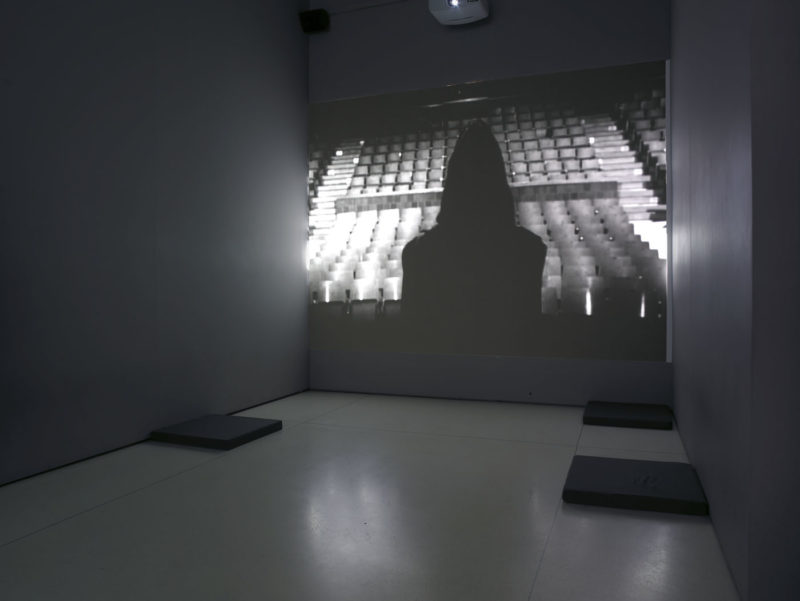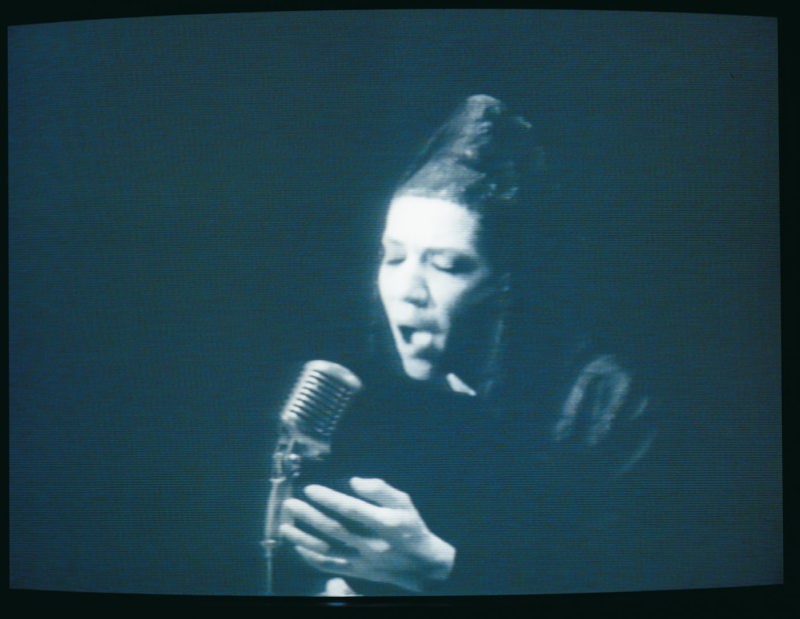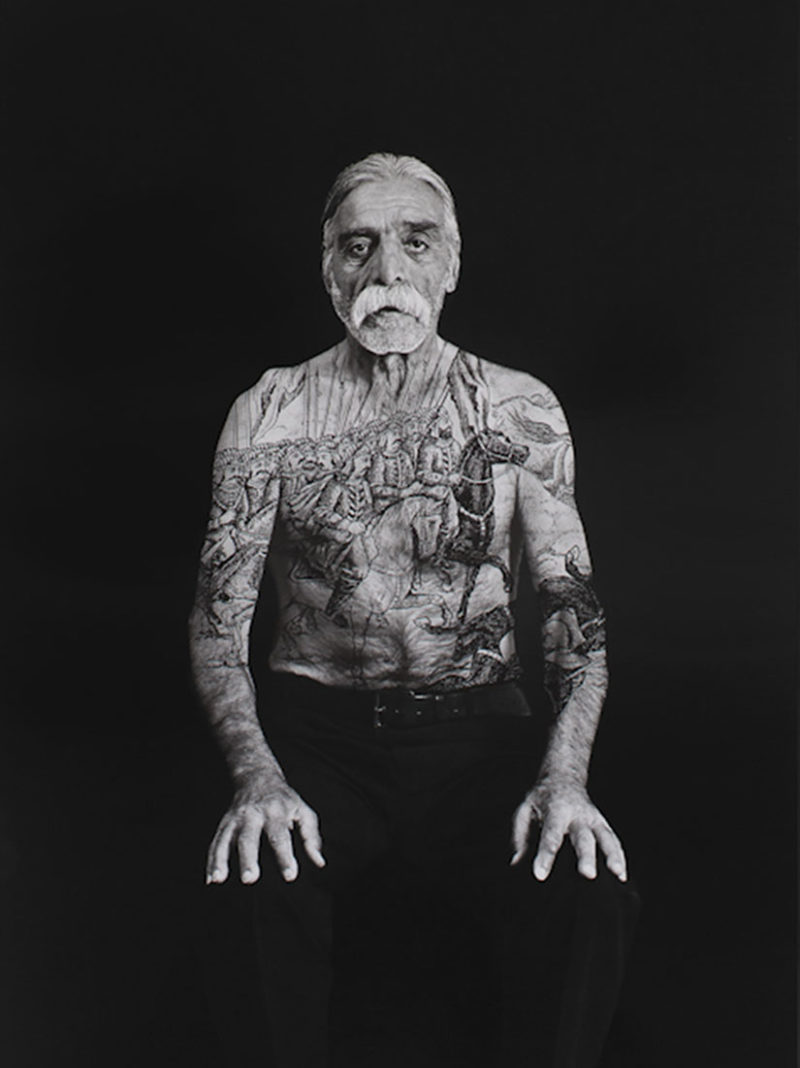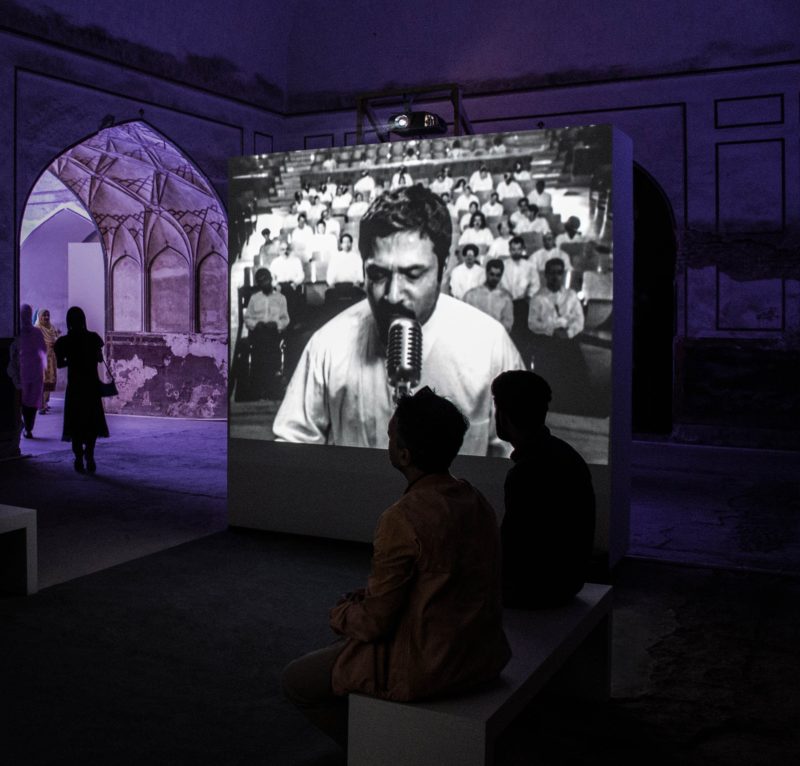
What is Turbulent?
Turbulent is a two-screen film installation by famous Iranian artist Shirin Neshat. It is among her most critically acclaimed works, having won her a Lion d’Or at the Venice Biennale back in 1999. It is also her first-ever venture into the world of video, an art medium that later played a significant role in her artistic career.
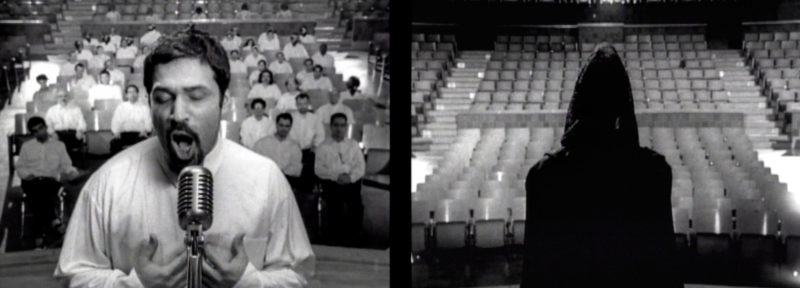
The video was created in 1998 and portrayed two male and female performers; Shoja Azari1 as the male, and Sussan Deyhim2 – an Iranian composer and vocalist, as the female. The two characters in the video create a powerful musical metaphor for the inherent in gender roles, cultural power, and injustices in Iran.
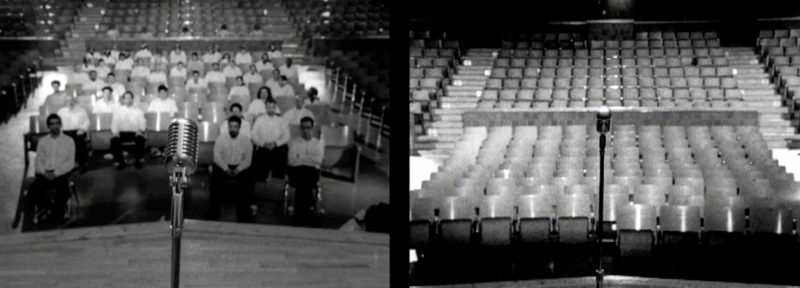
In all her pieces, including Turbulent, Neshat maintains a consistent theme, recognizing sharply defined binaries regarding gender roles in Iranian society. She focuses these dichotomies exactly in black and white without any promise of resolution and synthesis.
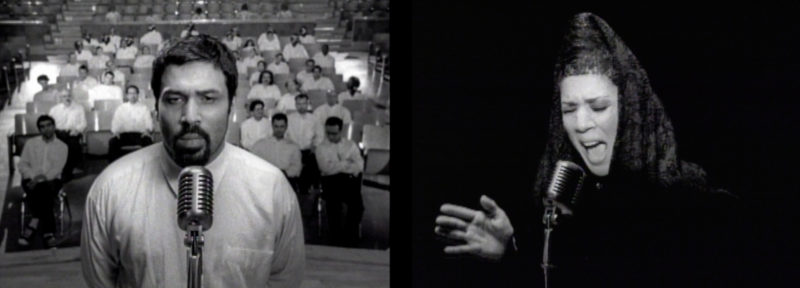
Video: Turbulent, 1998
9 min 8 sec
What happens in Turbulent?
What happens in Turbulent?
On one screen of this video installation, a male singer can be seen performing a traditional Persian romantic song in front of a live audience. In contrast, on the other screen, a woman stands still through his performance, but in front of an empty concert and her back to the camera.
Not only is the female in the video constrained from participating in the singing. She is also forbidden from singing in public by the authorities of the Iranian government.

At the end of the male singer’s performance, the female artist can be seen breaking into a wordless song, comprising of zealous breaths and a series of rasping cries, wails, and whispers, peppered with animated hand movements.
Whereas the camera was stationary while filming the male singer, it moves around the female singer in a slow, enraptured swirl. The empty, darkened auditorium vanishes; her face and voice are now the centers of attention.
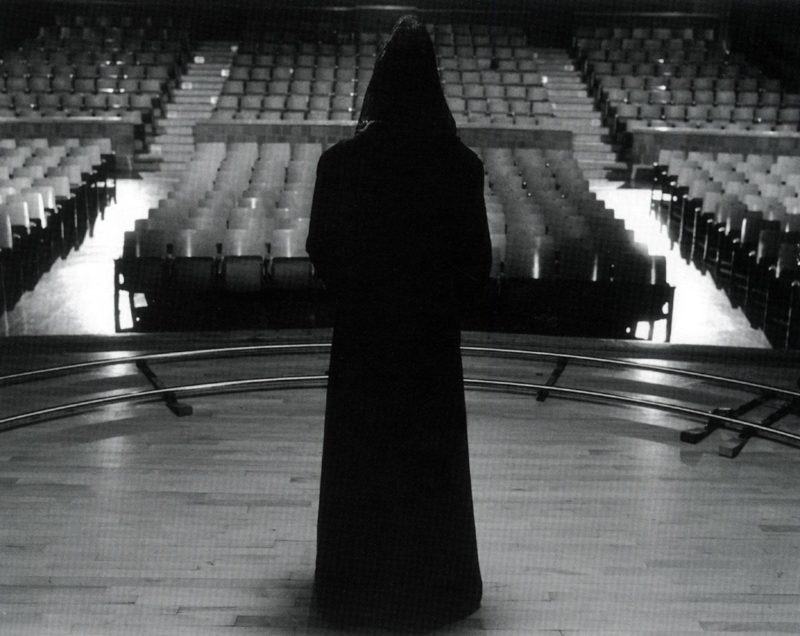
Both the male and female exude the same singing style; melismatic, which is a single syllable of text, is sustained through multiple notes, including grace notes, giving the whole song a continuous fluidity. This instantly struck the audience – the contrast between the male performer’s evocative lyrics and the traditional melody and the female performer’s completely non-concrete sound poem.
The female’s performance is proscribed. In contrast, the male singer is socially authorized, yet, paradoxically, the female performance leaves a much larger impression on the audience, courtesy of its unrestricted nature.
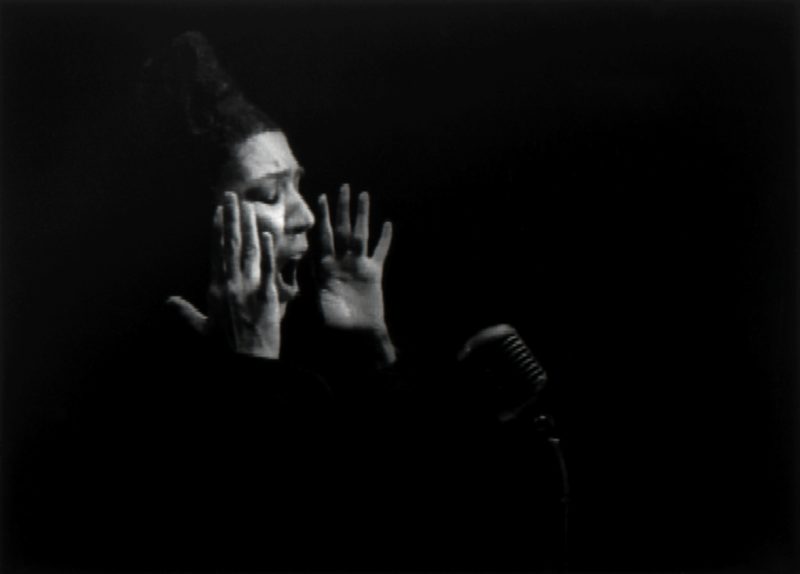
Video: What is Melismatic Singing?
1 min 40 sec
Contrasts between male & female
Contrasts between male & female
The contrast in Turbulent portrays male freedom and how regardless of the setbacks he faces, the man will always be in a more advantageous position over the woman.
The female performer represents the voice of other women who are victims of gender inequality. As the female performer breaks into his silent music at the end of the male performance, it shows a possibility of liberation.
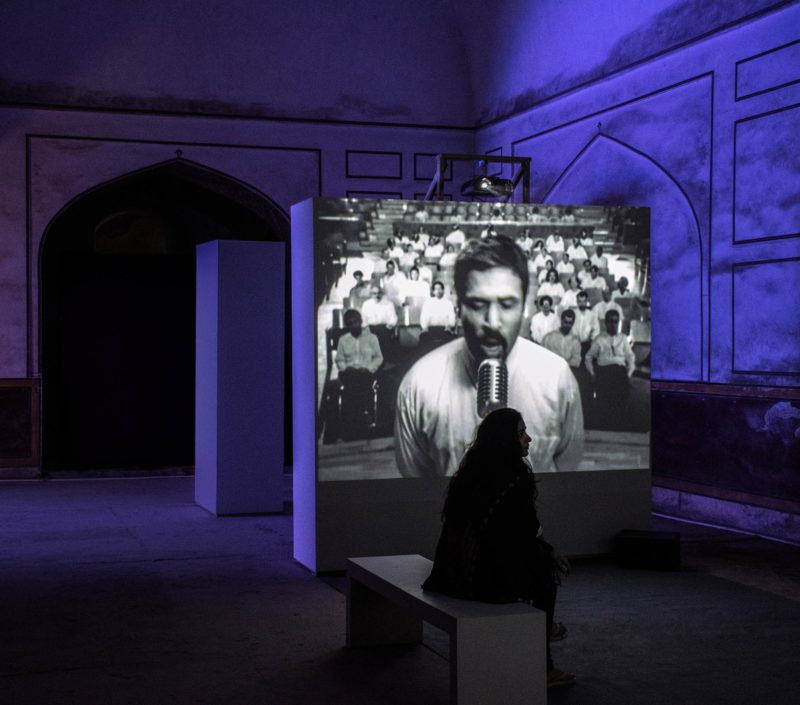
Shirin Neshat bases Turbulent on a definite political orientation, the Islamic law in her home country, Iran, which bars women from performing music in public. However, the piece is actually about the country’s wealth of male-female contrasts, as it is suggested through the body language of the performers, setting, camera work, and the music itself.
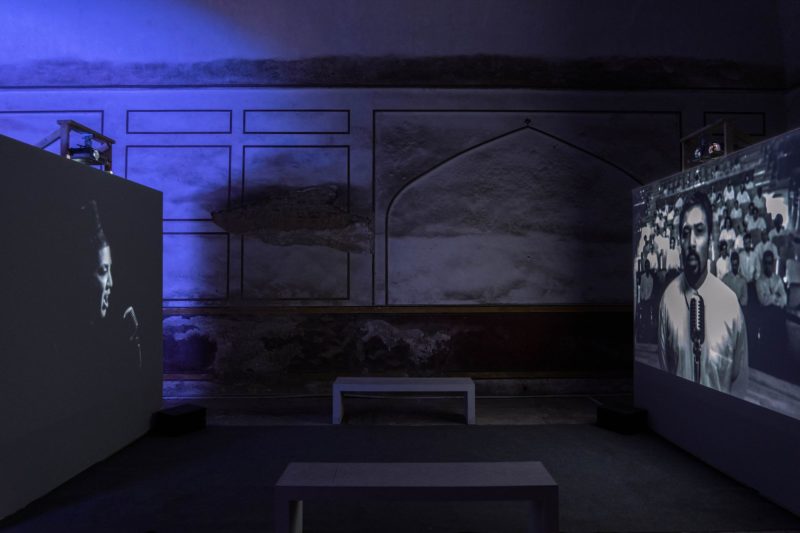
Video: Shoja Azari’s part
3 min 21 sec
Video: Sussan Deyhim’s part
5 min 20 sec
Video: Sussan Deyhim’s part
The male’s song is traditional, approved of, tied to language, while the woman is lonely, illicit, free-form, and ostensibly spontaneous. Sussan Deyhim herself composed the female’s song. The result is a fused image of rare reverberation, with electrifying music etched in the memory long after you have left the auditorium.
Speaking about the female performance in the video installation, Neshat said:
Her music and her presence in this room represent something rebellious. This is indicative of how I feel about women in Iran. I think that they are so far against the wall, but they are far more resilient and protesting, and they are much more of a fighter than the men because they have much more at stake.
You are forced to take a side
The installation of Turbulent requires two opposite walls. Thus, it is impossible to watch them concurrently, so the viewer must decide where to instantly direct their attention upon entering the display room, thus taking sides in the gendered competition composed of dueling approaches to the performances by the two singers.
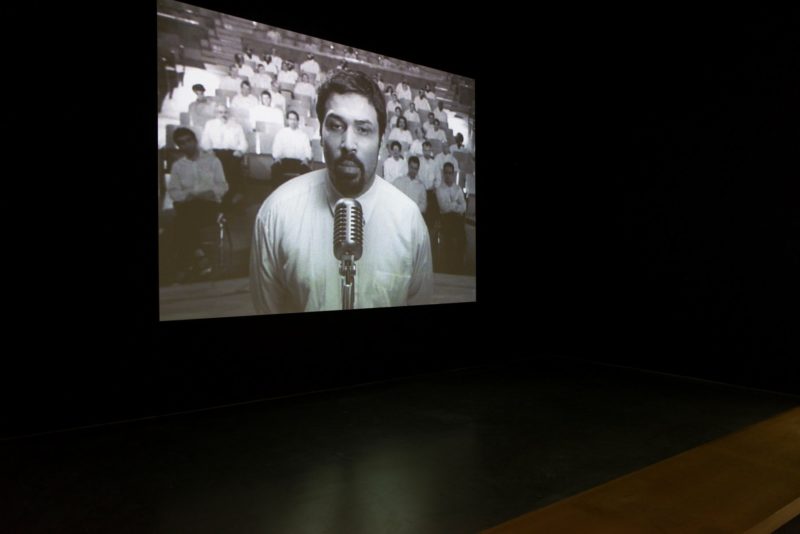
Although the female’s song in the video has no words, or because of it, there is actually no room for misinterpretation. However, what the viewers experience is the universal dimension or the communicative power of music as a language with the capabilities to travel across time and place.
Also, seeing that most of the activities, especially texts that are religiously related, have been relegated to men in Iran, the female subject’s perfection of the written word gives her disobedient performance two meanings.
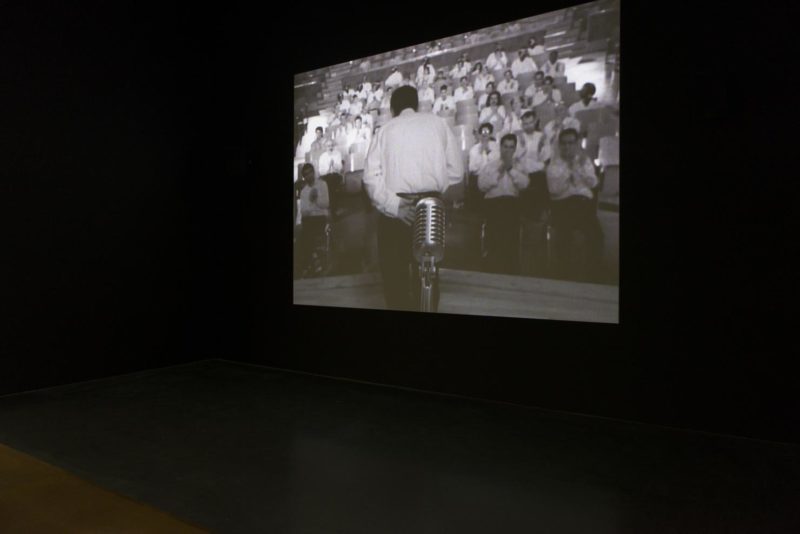
Through the metaphorical gesture of her lyric-less song, the female singer (Deyhim) first regains a space peacefully without resorting to the violence, which rendered her imperceptible in the first place.
Second, her wailing and throbbing utterances hit the audience on a primal level that arouses the transformative powers of shamanic rituals equally marginalized practices. This effect, subsequently, makes the viewers oversensitive to the tone of the whole performance. It is like a sorrowful cry for an unrecoverable loss.
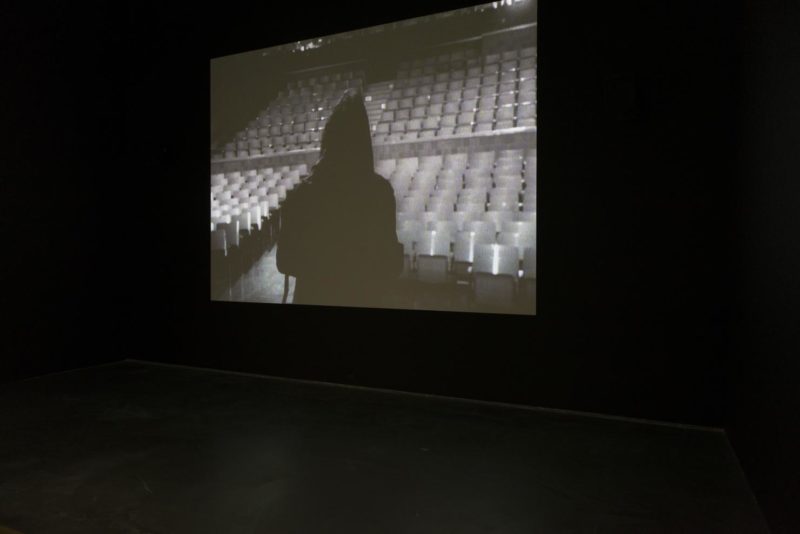
Analysis
Perhaps the most obvious interpretation of Turbulent is its association with the gender separation that is synonymous with Iranian society. However, it also leaves room for broader interpretation by linking it to the global turbulence of the modern day. The fight against inequality, the battle for label-free identities, and the fight against right-wing populism is the hallmark of contemporary society.
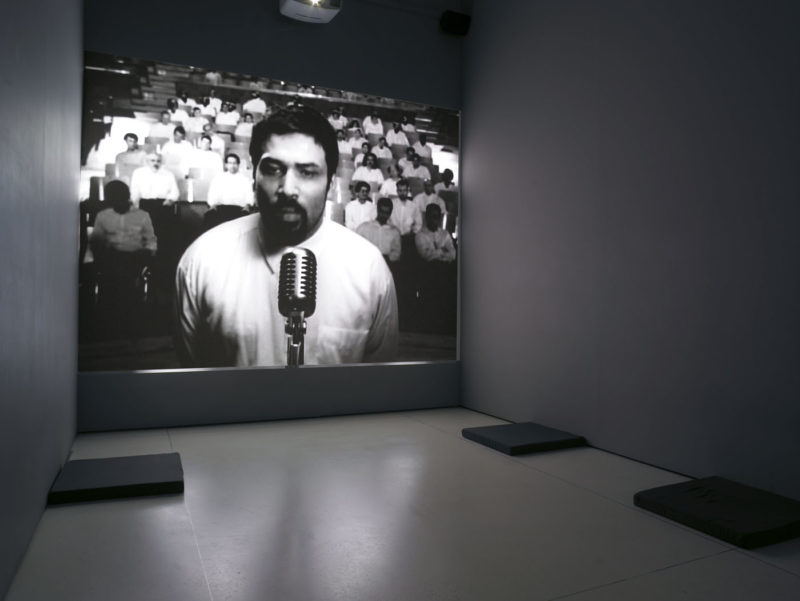
The erratic and erotic movements of the camera bring the viewer up close. At the same time, it distances them. The alternation suggests the gulf between the local and the global.
Being local is often denoted as being backward and in need of intervention or help, while global connotes modernity and cosmopolitanism, thus broad-minded and more desirable. By being local and global simultaneously, Turbulent dismisses such naive oppositional categories.
